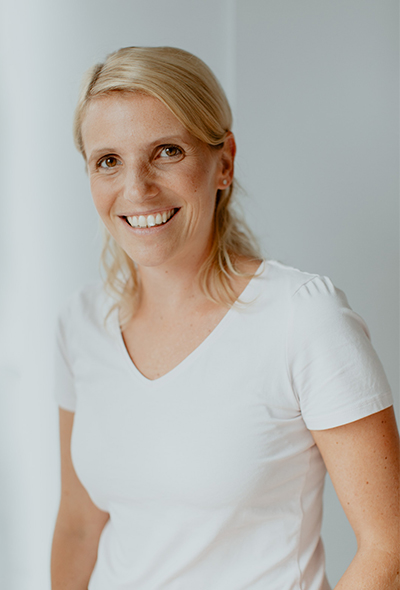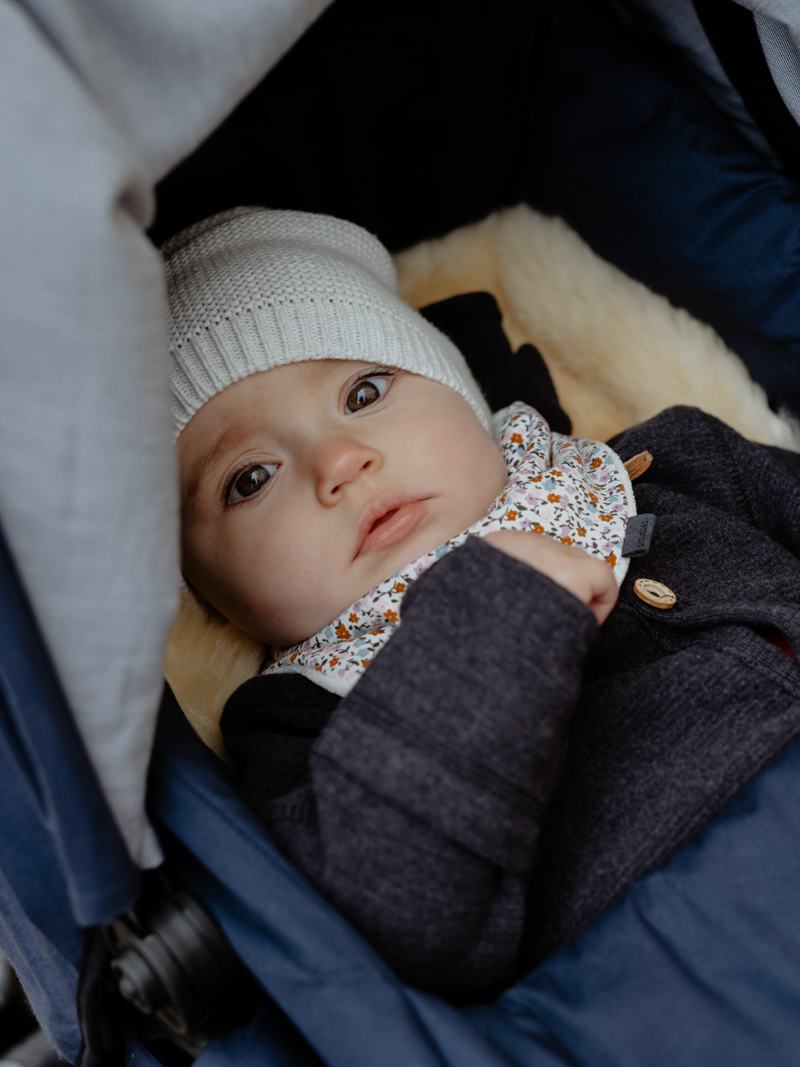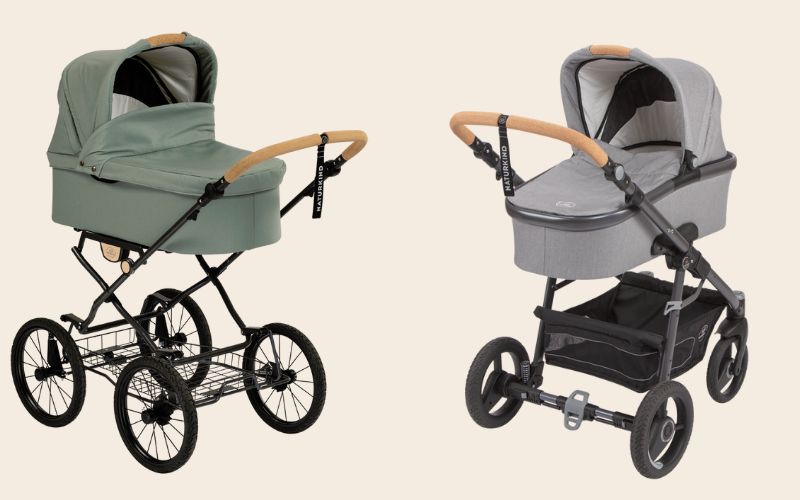When it gets colder outside, the leaves fall from the trees and perhaps the first snow crunches under your feet, you are probably already looking forward to walks and excursions with your little darling.
Now you may be wondering how best to get through the cold season with your baby.
Dressing a baby properly in autumn and winter requires a system or a strategy so that you are prepared for the onset of winter.
As we all know, there is no such thing as bad weather, only unsuitable clothing!
Cozy warmth – the basics for your baby.
You have to keep your baby "warm". A lot of heat is lost through the head in particular, as it is larger in relation to the body than in adults. It is therefore very important that you always put a hat on your child. Preferably made of natural materials, otherwise the baby will start to sweat very quickly. In addition, your newborn does not yet have the insulating subcutaneous fat.
It is best to dress your child according to the “onion principle”.
Functional underwear
The underwear lies directly on the skin, so it must not irritate the baby's sensitive skin, must breathe with the baby's skin and protect the back and stomach from the cold.
Underwear should prevent sweating so that the body stays dry. A must-have is therefore short or long-sleeved bodysuits with a wrap look or slip-on style.
insulation layer
You then put the insulation layer over the body. This can be:
a long-sleeved shirt or sweater
pants or tights (depending on the cold, both are possible)
alternatively indoor overalls or rompers
"You can easily check whether your baby is warm enough by checking the neck. Baby's neck should be nice and warm, but not sweaty and damp."
Well packed in the stroller or baby carrier
When going outside, you should also wear a snowsuit. This can be made of down or natural materials.
For walks in the stroller, a footmuff made of lambskin is highly recommended. For very small children, you can put a warming bag (e.g. a cherry stone bag) in the footmuff. It is also important that the fingers are covered with mittens or can be put into the overalls. For the feet, additional wool socks or woolen shoes are recommended.
If you are out and about with a baby carrier, there are several alternatives:
a wool or fleece overall
a winter carrying cover that you stretch over the carrier or the sling
or a winter jacket with baby insert
For longer walks, always pack a change of clothes for your baby, as your child will cool down very quickly, for example when wet.
A good way to check whether your baby is warm enough is to look at the back of the neck. The baby's neck should be nice and warm, but not sweaty and damp. Since the blood flow to the hands is not good at first, they can be a little cooler, but definitely not ice cold or blue.
What you can do at home
In winter, it is usually too warm in the apartment rather than too cold. The temperature in the bedroom should be around 18 degrees Celsius. The dry heating air is not so good for the respiratory system. A humidifier (without scented oils!), a bowl of water or damp, hanging laundry can help.
A heat lamp is recommended so that the baby can kick freely and for longer periods of time at the changing table. Kicking can significantly reduce colic.
skin protection in winter
Your baby's skin is five times thinner than that of an adult. To keep the skin soft and prevent it from drying out, I recommend using a wind and weather cream during the cold season - a cream that contains fat and protects against the cold. However, this should be washed off before going to bed so that the skin can breathe freely.
Bathing in the cooler seasons can be reduced to once or twice a week. It is best to bathe your baby in the evening before going to bed so that after the bath it can be put into the cozy, warm bed with a heating pad, if necessary.
Vitamin D – for bone formation, nerve cells and muscles
Vitamin D is important for bone development, nerve cells and for strengthening muscles.
Vitamin D is generally produced by the skin when exposed to sunlight, which is of course not an issue in summer. In winter, the sun rarely shines in our area and children are wrapped up warmly when they spend short periods of time outside. The skin is then only exposed to the sun to a small extent. A deficiency can therefore develop very quickly. According to the doctor's prescription, vitamin D should be replaced at least in the autumn and winter months. There are also alternative ways of administering vitamin D. These can be discussed with the midwife or pediatrician.
A final tip…
Don't forget to allow enough time for putting on and taking off winter clothes, because stress makes you and your little one restless.
I wish you and your autumn/winter baby a wonderful first time together.







Leave a comment
All comments are moderated before being published.
This site is protected by hCaptcha and the hCaptcha Privacy Policy and Terms of Service apply.